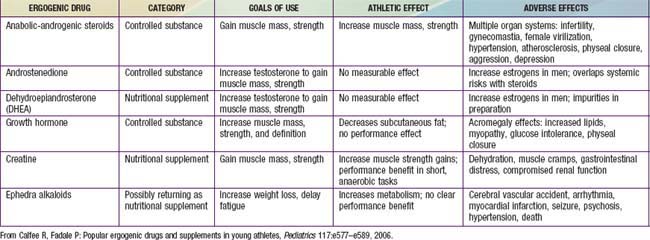Chapter 683 Performance-Enhancing Aids
Performance-enhancing drugs have been used by athletes since at least since 776 BCE. Ergogenic aids are substances used for performance enhancement, most of which are unregulated supplements (Table 683-1). The 1994 Dietary Supplement and Health Education Act limited the ability of the U.S. Food and Drug Administration to regulate any product labeled as a supplement. Many agents have significant side effects without proven ergogenic properties. In 2005, the American Academy of Pediatrics published a policy statement strongly condemning their use in children and adolescents. The US 2004 Controlled Substance Act outlawed the purchase of steroidal supplements such as tetrahydrogestrione (THG), and androstenedione (Andro), with the exception of dehydroepiandrosterone (DHEA).
Anabolic-androgenic steroids (AAS)
Stay updated, free articles. Join our Telegram channel

Full access? Get Clinical Tree



